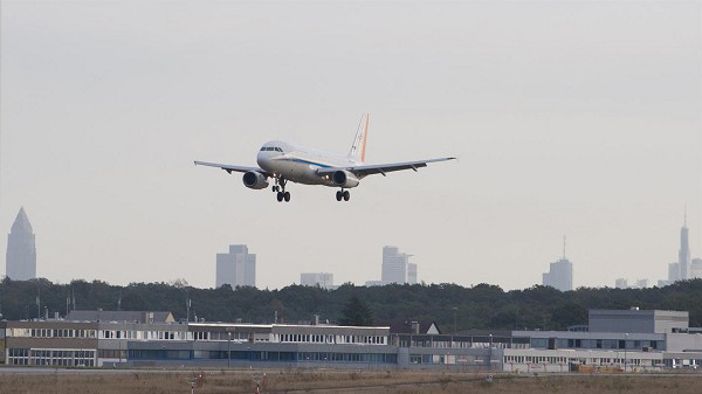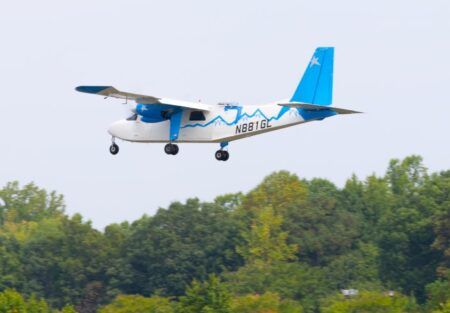Reducing aircraft noise over residential areas while saving kerosene – this dual improvement is the aim of a joint research project being conducted by the German Aerospace Center (DLR) and the Umwelt- und Nachbarschaftshauses (UNH) in Kelsterbach, Germany.
From September 26 to 28, DLR used its A320 Advanced Technology Research Aircraft (ATRA) to flight test a new low noise augmentation system (LNAS), which is a pilot assistance system for noise-optimized landing approaches.
Currently, during landing – generally the most labor-intensive phase of a flight – it is often difficult for pilots to select the optimum times at which to extend the flaps and lower the landing gear so that the greatest possible part of the landing approach can be conducted in quiet, fuel-efficient circumstances, with the engines at idle.
As a result of a doctoral research project at the DLR Institute of Flight Systems in Braunschweig, Germany, an assistance system has been developed that shows the pilots a flight deck display of the points at which they need to carry out certain actions to create the optimum low-noise descent in line with the approach controller’s instructions. To date, the system has been successfully tested in a simulator and in initial research flights with no surrounding air traffic. Now it is time to test the system during peak traffic at Frankfurt Airport.
Weather conditions, poor visibility, the weight of the aircraft, and instructions from air traffic control, each have a different effect on every landing. DLR researchers want to find out how these variable influences affect the new assistance system and how professional pilots respond to the system. For this reason, pilots from several airlines have taken turns to sit alongside a DLR test pilot on ATRA’s flight deck and make approach flights to Frankfurt – sometimes with the assistance system, sometimes without.
The test flights are being coordinated with the German air traffic control service Deutsche Flugsicherung (DFS) and Frankfurt Airport. Before the actual flight tests, extensive trials were carried out in the DLR Air Vehicle Simulator (AVES).
“We are delighted to now be able to send the newly-developed assistance system for a real-life check at the busiest airport in Germany,” said Stefan Levedag, head of the DLR Institute of Flight Systems.
“An important step in the development process is gathering the impressions and experiences of experienced airline pilots with the new system in the demanding operational environment at Frankfurt Airport, with its high volume of traffic.”
Another advantage is the numerous noise measurement stations that have been set up around the airport. These can be used to locally quantify the noise reduction effect of the optimized approaches. The results of the project will be presented at ICANA 2016, the fourth International Conference on Active Noise Abatement, in November and then subsequently published.
The test flight program includes a total of five test flights of five hours per day, including take-off, approach and go-around, using the northwest runway at Frankfurt Airport. During each test flight, the flight captain (a DLR pilot) will be accompanied by four pilots who will each carry out two approaches in normal operational conditions – once with and once without the pilot assistance system. The sequence of pilots and use of the system has been arranged so that any learning effect is excluded.
In the test flights, the altitude and speed profiles of conventional approach flights will be investigated in terms of their potential for reducing noise, fuel consumption and flight time within the constraints of real flight operations. In addition to improvements in terms of noise and precision, error-free functioning of the prototype in actual flight operation is expected from the start, along with a high level of acceptance by the pilots.
September 29, 2016





